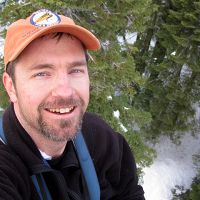Tian et al., 2019
Lithologic, Climatic and Depth Controls on Critical Zone Transformations
TIAN, Z., P.C. HARTSOUGH and A.T. O’GEEN (2019)
Soil Science Society of America Journal, 83
-
Sierra, INVESTIGATOR
-
Sierra, INVESTIGATOR
Abstract
We evaluated the effects of temperature and subtle differences in lithology (biotite content) on the degree of pedogenesis in regolith (soils + saprock) in granitic terrain of the southern Sierra Nevada. Deep regolith was sampled from summit and backslope landscape positions in two catchments representing the transition from rain-dominated (1100 m elevation) to snow-dominated (2000 m elevation) precipitation. Regolith thickness varied regardless of degree of soil development (e.g., Alfisols vs. Inceptisols), ranging from 1.4 to 7.6 m at the 1100 m site and 1.5 to 10.7 m at the 2000-m site. Biotite content in fine sand fractions of saprock was positively correlated with regolith thickness at both sites. In the rain-dominated catchment (1100 m elevation), particle grain size was negatively correlated with regolith thickness. Evidence of pedogenic transformations was evaluated based on clay content and dithionite extractable iron (Fed). The degree of regolith transformation was controlled by heat energy, which was related to the temperature mediated by depth. Annual sum of heat energy modeled from surface to hard bedrock showed a significant positive correlation with clay content and Fed concentration. The slopes of regression lines between annual heat energy load and clay and Fed were steeper at the 1100 m site, where the dominant form of precipitation was rain. This trend is a result of the greater degree of pedogenesis and higher temperatures in soils compared with saprock at 2000 m.
Citation
TIAN, Z., P.C. HARTSOUGH and A.T. O’GEEN (2019): Lithologic, Climatic and Depth Controls on Critical Zone Transformations. Soil Science Society of America Journal, 83. DOI: 10.2136/sssaj2018.03.0120
 This Paper/Book acknowledges NSF CZO grant support.
This Paper/Book acknowledges NSF CZO grant support.
Explore Further


